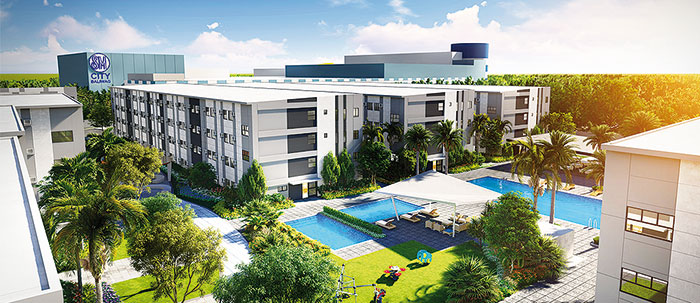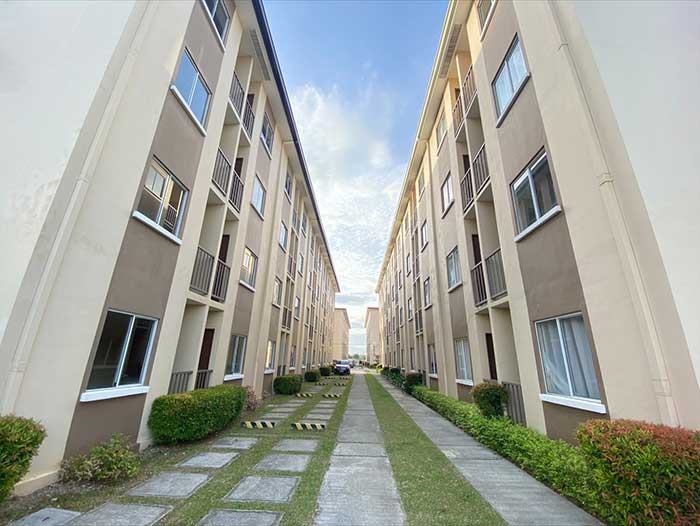Mid-rise buildings can help address the Philippines’ housing backlog while making home ownership affordable, according to Roy Golez, director of research of Leechiu Property Consultants.
At the media launch of SM Development Corp.’s mid-rise garden communities recently, Golez said he does not see the current housing backlog of 6 million housing units to be covered in the next five years.
Golez said this number is expected to balloon to 12 million units by 2030.
To fully cover the housing needs, Golez said at least 450,000 units have to be built every year by both by the private sector and the public sector.
But based on launches and absorption or sales of condo units in Metro Manila, the hottest market for housing, only 17,000 to 18,000 condominium units are being released every year.
“That’s a pittance compared to the 6 million that we need to build and supply to the market. There’s just not enough housing being built and sold every year,” Golez said.
Golez added housing demand typically follows employment which is first generated in cities and in the fringes or edges made accessible by infrastructure projects like roads, rails and bridges.
Golez said Laguna experiences high migration and fast population growth because of the industrial activities in the area and the infrastructure being built down south.
“The construction of all these infrastructure projects follows land value appreciation. This is where the demand for housing is,” he said.
“Because of high land values, it will be too expensive for people to build single -storey bungalows or the typical house and lot homes. Thus we see more mid-rise buildings coming up. MRBs offer a more affordable alternative,” Golez said.
He added: “There’s a flourishing demand for MRBs which add to the (incentive) for a millennial or a startup family to own and acquire (a home). MRBs’ amenities are very secure and have the convenience of city living. MRBs are in quiet communities and are designed for families. These are also in very desirable locations.”
Golez said an MRB is a good balance between the inefficient land use of a single family home and the extreme density of a high- rise.
Golez added the land use in a single-home is so inefficient it occupies almost 100 percent of the land that only one family can use.
He said a high-rise building will have 20 to 30 units in each floor with only four or six elevators.
“That causes traffic in the building which you will not experience in an MRB,” he said.
Golez said the lower density in an MRB translates to a better quality of life. Locations of MRBs as well as the commercial support and other amenities there provide a very convenient city- type of living that make them a very attractive product for those who are investing.
In general, Golez believes this is the best time to invest in real estate.
“We’ve seen real estate values continuously grow even during the pandemic. So your peso today has grown by about eight to 10 percent in the last two years. This gives buyers the reassurance investments made or money invested in these projects will continue to grow,” Golez said.
He added demand for housing today is just too huge and will continue to be high.
Golez said a residential unit or a condo is a good passive rental income as demand for this type of home is high.
He noted that at no time ever has there been a situation where developers have offerings of modern design and sustainable projects at very low costs in terms of monthly amortization.
Lastly, Golez said buying properties actually provides an opportunity to help the economy as real estate has a six times multiplier effect.
“One peso spent in real estate actually translates to P6 contribution to the economy in terms of related services in real estate, labor, construction materials and so on and so forth,” Golez said.
He added: “There is a high demand for MRB housing. The investment you make will make you gain in terms of not only convenience, but also capital value growth for your money. At the same time, you’re also helping the economy… helping your own health because new designs today are already health focused or oriented.”
But Golez advised buyers to consider a few factors before investing in a property.
“Number one, you have to be ready to invest. You have to have enough savings and cash flow and emergency fund before you put out your first peso into your real estate investment… enough money that you can project or you can cover the monthly payments or monthly amortization. Second, would be (the property you are investing in should be) in a good, accessible location. Demand will come if you’re in a good location and third, (make sure) that area has demand for housing. And fourth, you need (to choose) a really strong developer. There is always the fear the project where you invested your money in will not be delivered, as you expected. So it’s always good to (choose) a strong developer,” Golez said.
Golez also emphasized a trend that’s been growing and especially emphasized during the pandemic: Investing in a modern sustainable project that is focused on health and on property growth value. Irma Isip




